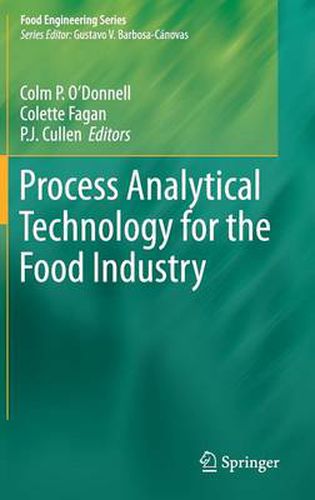Readings Newsletter
Become a Readings Member to make your shopping experience even easier.
Sign in or sign up for free!
You’re not far away from qualifying for FREE standard shipping within Australia
You’ve qualified for FREE standard shipping within Australia
The cart is loading…






This title is printed to order. This book may have been self-published. If so, we cannot guarantee the quality of the content. In the main most books will have gone through the editing process however some may not. We therefore suggest that you be aware of this before ordering this book. If in doubt check either the author or publisher’s details as we are unable to accept any returns unless they are faulty. Please contact us if you have any questions.
The Process Analytical Technology (PAT) initiative aims to move from a paradigm of ‘testing quality in’ to ‘building quality in by design’. It can be defined as the optimal application of process analytical technologies, feedback process control strategies, information management tools, and/or product-process optimization strategies.Recently, there have been significant advances in process sensors and in model-based monitoring and control methodologies, leading to enormous opportunities for improved performance of food manufacturing processes and for the quality of food products with the adoption of PAT. Improvements in process efficiency, reduced product variability, enhanced traceability, process understanding, and decreased risk of contamination are some of the benefits arising from the introduction of a PAT strategy in the food industry.
Process Analytical Technology for the Food Industry reviews established and emerging PAT tools with potential application within the food processing industry. The book will also serve as a reference for industry, researchers, educators, and students by providing a comprehensive insight into the objectives, challenges, and benefits of adopting a Process Analytical Technology strategy in the food industry.
$9.00 standard shipping within Australia
FREE standard shipping within Australia for orders over $100.00
Express & International shipping calculated at checkout
This title is printed to order. This book may have been self-published. If so, we cannot guarantee the quality of the content. In the main most books will have gone through the editing process however some may not. We therefore suggest that you be aware of this before ordering this book. If in doubt check either the author or publisher’s details as we are unable to accept any returns unless they are faulty. Please contact us if you have any questions.
The Process Analytical Technology (PAT) initiative aims to move from a paradigm of ‘testing quality in’ to ‘building quality in by design’. It can be defined as the optimal application of process analytical technologies, feedback process control strategies, information management tools, and/or product-process optimization strategies.Recently, there have been significant advances in process sensors and in model-based monitoring and control methodologies, leading to enormous opportunities for improved performance of food manufacturing processes and for the quality of food products with the adoption of PAT. Improvements in process efficiency, reduced product variability, enhanced traceability, process understanding, and decreased risk of contamination are some of the benefits arising from the introduction of a PAT strategy in the food industry.
Process Analytical Technology for the Food Industry reviews established and emerging PAT tools with potential application within the food processing industry. The book will also serve as a reference for industry, researchers, educators, and students by providing a comprehensive insight into the objectives, challenges, and benefits of adopting a Process Analytical Technology strategy in the food industry.